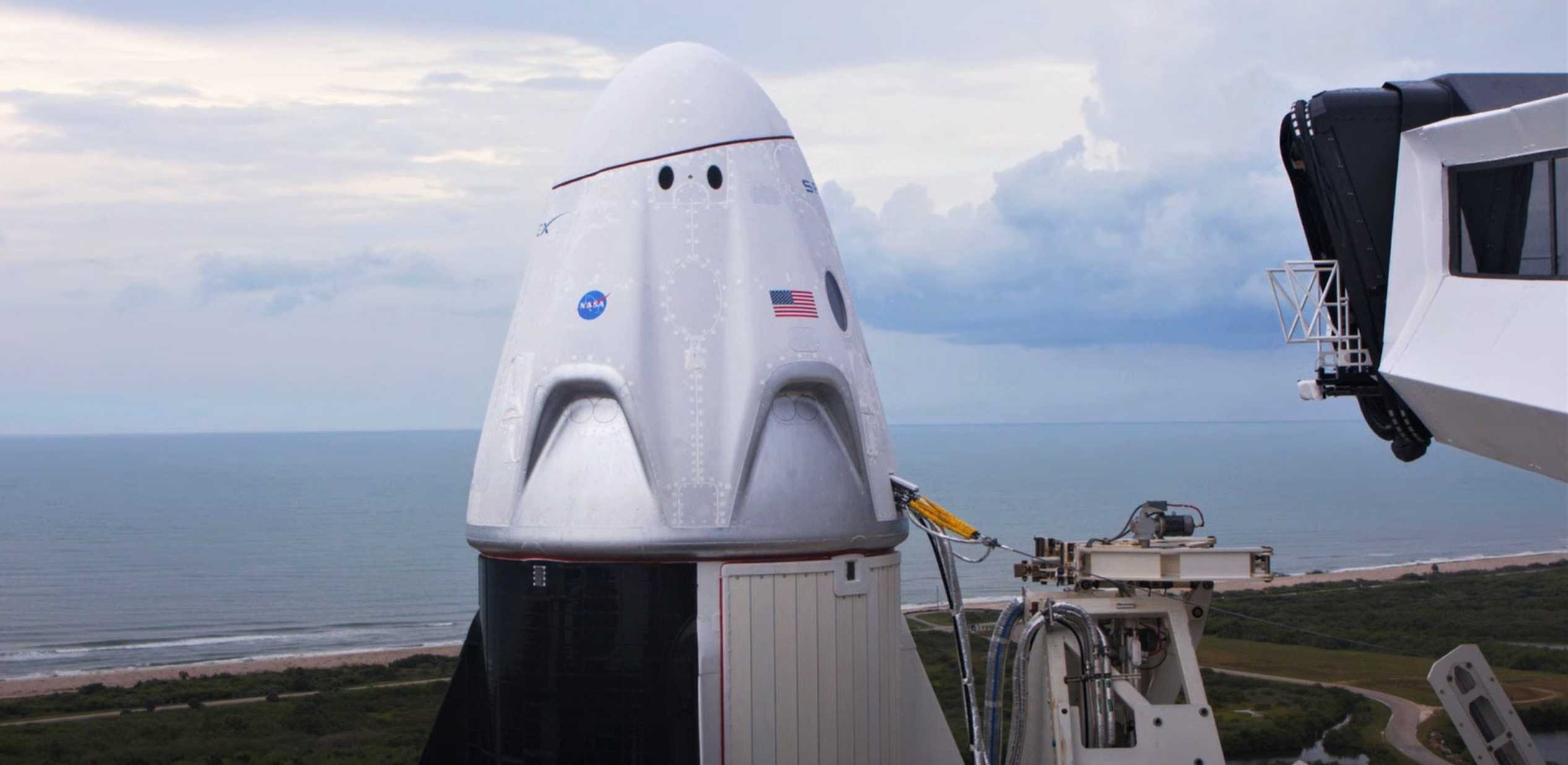

News
SpaceX’s historic NASA astronaut launch debut on track for second attempt
Rather than making history on May 27th, SpaceX’s highest-profile launch ever – Crew Dragon’s NASA astronaut launch debut – was scrubbed just minutes before liftoff by stormy Florida weather. Unfortunately, conditions appear to be even less favorable on Saturday and Sunday backup windows.
Weather trended well, until it didn’t
The day began with launch fans growing increasingly concerned about a system of low-pressure off of Florida’s northeast coast that strengthened into tropical storm Bertha – the second named storm before the official start of the Atlantic basin hurricane season on June 1st. As the day progressed, Bertha became less of a worry for SpaceX recovery and emergency abort drop zones as it moved further north up the coast eventually making landfall in South Carolina. Then the thunderstorms began firing up.
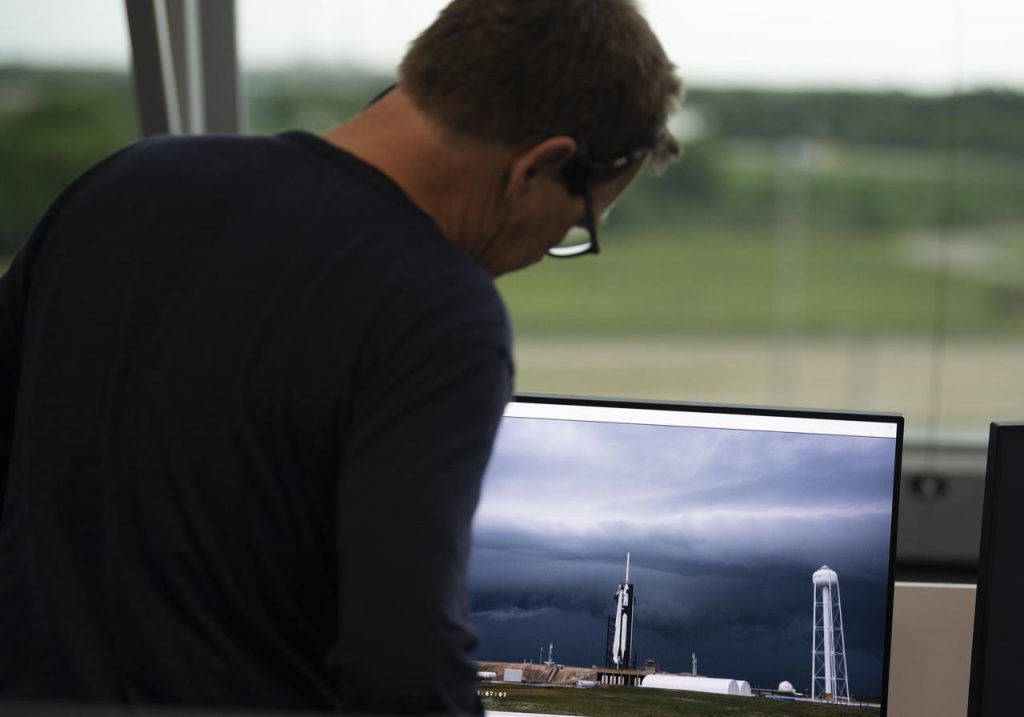
Going into launch day launch weather officer, Mike McAleenan of the U.S. Space Force’s 45th Weather Squadron predicted a 60% chance of favorable launch weather conditions. That decreased slightly to 50% during the morning’s launch weather briefing. The 50/50 shot of Florida weather cooperating to get the launch off during the one-second long launch window opportunity remained the main concern for the rest of the day.
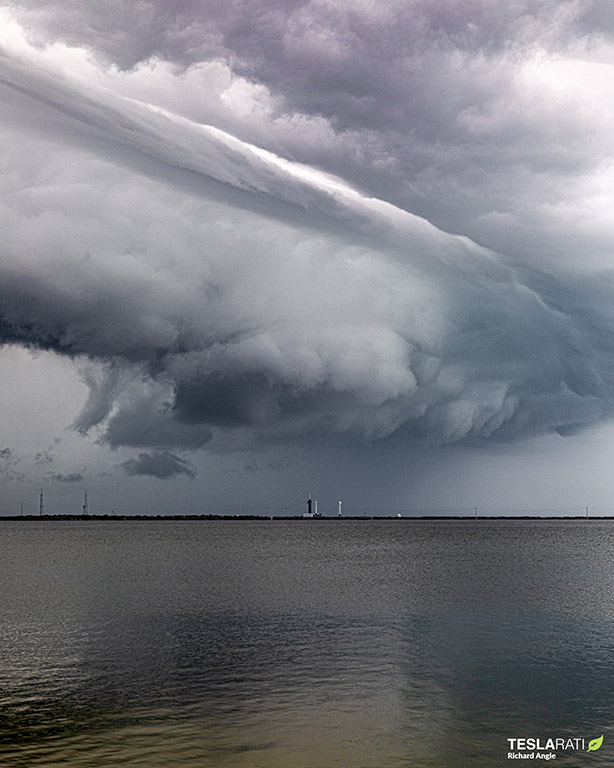
During the final thirty minutes of the countdown, many of the weather constraints that were holding up a green-light for launch from cleared up, but one last weather rule remained no-go. McAleenan stated over the internal weather communication loop during NASA’s live broadcast that if the launch window could’ve extended another 10 minutes, the weather would probably cooperate. This wasn’t the case, though. The launch attempt was ultimately aborted just 14 minutes shy of liftoff due to the “field mill” rule not clearing in time. The lightning field mill rule refers to a sophisticated electrical field system that spans the entire area of Kennedy Space Center and the surrounding area of Cape Canaveral responsible for continuously detecting the electrical charge of the atmosphere.
Protecting rockets from producing lightning
Rockets are not permitted to launch through an electrically charged atmosphere because of the possibility of what is called “triggered” lightning – lightning that is actually produced by a rocket bursting through an electrically charged atmosphere. Sending a rocket through an already unstable atmosphere can cause a disturbance, a lightning bolt, to be triggered. This phenomenon has the capability of being potentially dangerous for the rocket and, more importantly in this case, the occupants on board.
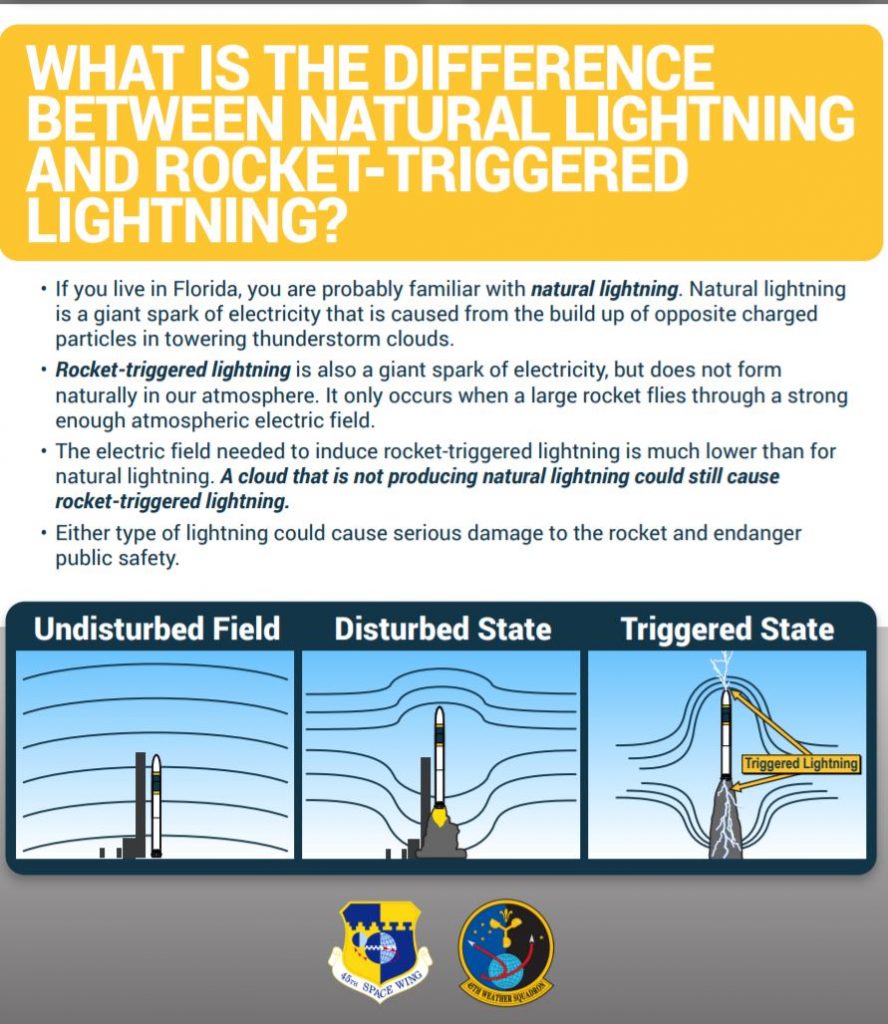
Demo-2, Round 2
Following a scrubbed first attempt, the 45th Weather Squadron released the L-3 (3 days until launch) forecast for the second attempt to send NASA astronauts Doug Hurley and Bob Behnken to the International Space Station. The prediction looked much like the one going into Wednesday’s attempt. On Thursday morning, May 28th, a new L-2 (2 days until launch) forecast was released showing very little change from the evening before.
SpaceX’s next attempt at a Demo-2 launch will occur on Saturday, May 30th, at 3:22:41pm EDT with another backup attempt scheduled for Sunday, May 31st at 3:00:07pm EDT. The outlook for the weather, however, looks much the same as it did for Wednesday. The 45th Weather Squadron is currently predicting only a 40% chance of favorable launching conditions on both days, and that’s just for the weather directly over LC-39A at the time of launch.
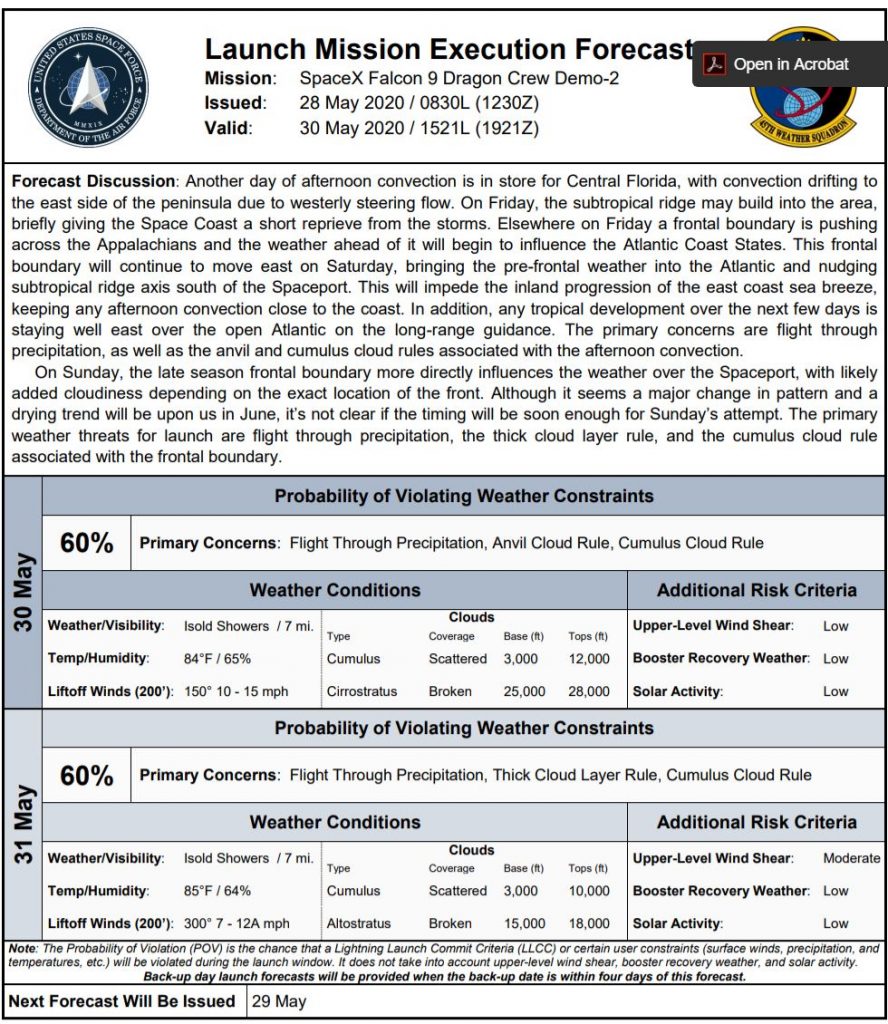
The 45th Weather Squadron does not predict other conditions that can determine a scrub of launch including upper-level atmospheric winds capable of completely sheering apart a rocket at altitude, or weather conditions for booster recovery and the recovery zones needed to rescue the Dragon capsule in the event of an emergency abort scenario. SpaceX has its own team of professionals that work in tandem with the 45th Weather Squadron to monitor the conditions of the recovery and abort zones. SpaceX takes things into consideration like wave height and patterns to determine whether or not conditions are appropriate enough for crews to perform any and all recovery operations that may be needed.
For Saturday’s attempt, the SpaceX Demo-2 will once again face the challenges of precipitation and dangerous lightning producing anvil and cumulus clouds. Expect launch day to look much like it did during the first attempt on Wednesday. SpaceX will need to thread one seriously precise needle to pull off the most historic rocket launch in company history.
Check out Teslarati’s newsletters for prompt updates, on-the-ground perspectives, and unique glimpses of SpaceX’s rocket launch and recovery processes.
Elon Musk
Tesla reveals it is using AI to make factories more sustainable: here’s how
Tesla is using AI in its Gigafactory Nevada factory to improve HVAC efficiency.

Tesla has revealed in its Extended Impact Report for 2024 that it is using Artificial Intelligence (AI) to enable its factories to be more sustainable. One example it used was its achievement of managing “the majority of the HVAC infrastructure at Gigafactory Nevada is now AI-controlled” last year.
In a commitment to becoming more efficient and making its production as eco-friendly as possible, Tesla has been working for years to find solutions to reduce energy consumption in its factories.
For example, in 2023, Tesla implemented optimization controls in the plastics and paint shops located at Gigafactory Texas, which increased the efficiency of natural gas consumption. Tesla plans to phase out natural gas use across its factories eventually, but for now, it prioritizes work to reduce emissions from that energy source specifically.
It also uses Hygrometric Control Logic for Air Handling Units at Giafactory Berlin, resulting in 17,000 MWh in energy savings each year. At Gigafactory Nevada, Tesla saves 9.5 GWh of energy through the use of N-Methylpyrrolidone refineries when extracting critical raw material.
Perhaps the most interesting way Tesla is conserving energy is through the use of AI at Gigafactory Nevada, as it describes its use of AI to reduce energy demand:
“In 2023, AI Control for HVAC was expanded from Nevada and Texas to now include our Berlin-Brandenburg and Fremont factories. AI Control policy enables HVAC systems within each factory to work together to process sensor data, model factory dynamics, and apply control actions that safely minimize the energy required to support production. In 2024, this system achieved two milestones: the majority of HVAC infrastructure at Gigafactory Nevada is now AI-controlled, reducing fan and thermal energy demand; and the AI algorithm was extended to manage entire chiller plants, creating a closed-loop control system that optimizes both chilled water consumption and the energy required for its generation, all while maintaining factory conditions.”
Tesla utilizes AI Control “primarily on systems that heat or cool critical factory production spaces and equipment.” AI Control communicates with the preexisting standard control logic of each system, and any issues can be resolved by quickly reverting back to standard control. There were none in 2024.
Tesla says that it is utilizing AI to drive impact at its factories, and it has proven to be a valuable tool in reducing energy consumption at one of its facilities.
Elon Musk
Tesla analysts believe Musk and Trump feud will pass
Tesla CEO Elon Musk and U.S. President Donald Trump’s feud shall pass, several bulls say.

Tesla analysts are breaking down the current feud between CEO Elon Musk and U.S. President Donald Trump, as the two continue to disagree on the “Big Beautiful Bill” and its impact on the country’s national debt.
Musk, who headed the Department of Government Efficiency (DOGE) under the Trump Administration, left his post in May. Soon thereafter, he and President Trump entered a very public and verbal disagreement, where things turned sour. They reconciled to an extent, and things seemed to be in the past.
However, the second disagreement between the two started on Monday, as Musk continued to push back on the “Big Beautiful Bill” that the Trump administration is attempting to sign into law. It would, by Musk’s estimation, increase spending and reverse the work DOGE did to trim the deficit.
Every member of Congress who campaigned on reducing government spending and then immediately voted for the biggest debt increase in history should hang their head in shame!
And they will lose their primary next year if it is the last thing I do on this Earth.
— Elon Musk (@elonmusk) June 30, 2025
President Trump has hinted that DOGE could be “the monster” that “eats Elon,” threatening to end the subsidies that SpaceX and Tesla receive. Musk has not been opposed to ending government subsidies for companies, including his own, as long as they are all abolished.
How Tesla could benefit from the ‘Big Beautiful Bill’ that axes EV subsidies
Despite this contentious back-and-forth between the two, analysts are sharing their opinions now, and a few of the more bullish Tesla observers are convinced that this feud will pass, Trump and Musk will resolve their differences as they have before, and things will return to normal.
ARK Invest’s Cathie Wood said this morning that the feud between Musk and Trump is another example of “this too shall pass:”
BREAKING: CATHIE WOOD SAYS — ELON AND TRUMP FEUD “WILL PASS” 👀 $TSLA
She remains bullish ! pic.twitter.com/w5rW2gfCkx
— TheSonOfWalkley (@TheSonOfWalkley) July 1, 2025
Additionally, Wedbush’s Dan Ives, in a note to investors this morning, said that the situation “will settle:”
“We believe this situation will settle and at the end of the day Musk needs Trump and Trump needs Musk given the AI Arms Race going on between the US and China. The jabs between Musk and Trump will continue as the Budget rolls through Congress but Tesla investors want Musk to focus on driving Tesla and stop this political angle…which has turned into a life of its own in a roller coaster ride since the November elections.”
Tesla shares are down about 5 percent at 3:10 p.m. on the East Coast.
Elon Musk
Tesla scrambles after Musk sidekick exit, CEO takes over sales
Tesla CEO Elon Musk is reportedly overseeing sales in North America and Europe, Bloomberg reports.

Tesla scrambled its executives around following the exit of CEO Elon Musk’s sidekick last week, Omead Afshar. Afshar was relieved of his duties as Head of Sales for both North America and Europe.
Bloomberg is reporting that Musk is now overseeing both regions for sales, according to sources familiar with the matter. Afshar left the company last week, likely due to slow sales in both markets, ending a seven-year term with the electric automaker.
Tesla’s Omead Afshar, known as Elon Musk’s right-hand man, leaves company: reports
Afshar was promoted to the role late last year as Musk was becoming more involved in the road to the White House with President Donald Trump.
Afshar, whose LinkedIn account stated he was working within the “Office of the CEO,” was known as Musk’s right-hand man for years.
Additionally, Tom Zhu, currently the Senior Vice President of Automotive at Tesla, will oversee sales in Asia, according to the report.
It is a scramble by Tesla to get the company’s proven executives over the pain points the automaker has found halfway through the year. Sales are looking to be close to the 1.8 million vehicles the company delivered in both of the past two years.
Tesla is pivoting to pay more attention to the struggling automotive sales that it has felt over the past six months. Although it is still performing well and is the best-selling EV maker by a long way, it is struggling to find growth despite redesigning its vehicles and launching new tech and improvements within them.
The company is also looking to focus more on its deployment of autonomous tech, especially as it recently launched its Robotaxi platform in Austin just over a week ago.
However, while this is the long-term catalyst for Tesla, sales still need some work, and it appears the company’s strategy is to put its biggest guns on its biggest problems.
-

 Elon Musk1 day ago
Elon Musk1 day agoTesla investors will be shocked by Jim Cramer’s latest assessment
-

 News6 days ago
News6 days agoTesla Robotaxi’s biggest challenge seems to be this one thing
-

 News2 weeks ago
News2 weeks agoTesla’s Grok integration will be more realistic with this cool feature
-

 Elon Musk2 weeks ago
Elon Musk2 weeks agoElon Musk slams Bloomberg’s shocking xAI cash burn claims
-

 News2 weeks ago
News2 weeks agoTesla China roars back with highest vehicle registrations this Q2 so far
-

 News2 weeks ago
News2 weeks agoTexas lawmakers urge Tesla to delay Austin robotaxi launch to September
-

 News2 weeks ago
News2 weeks agoTesla dominates Cars.com’s Made in America Index with clean sweep
-

 Elon Musk1 week ago
Elon Musk1 week agoFirst Look at Tesla’s Robotaxi App: features, design, and more




















